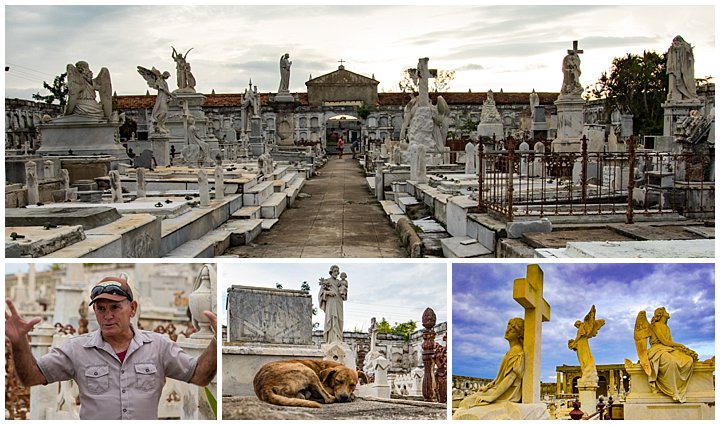
We spent one night in Cienfuegos, a city located on a bay on Cuba’s south coast of Cuba. This was mostly just meant as a stop-over between Viñales and Trinidad, and to give us the feel of a small Cuban town that few tourists see. One of our stops in town was at the La Reina Cemetery (above), where we were given a brief lecture on the history (bottom-left), while under the watchful eye of the “graveyard dog” (lower-middle).
This cemetery is the oldest in town, established in 1837, and is the resting place of the Spanish soldiers who died during the War of Independence.
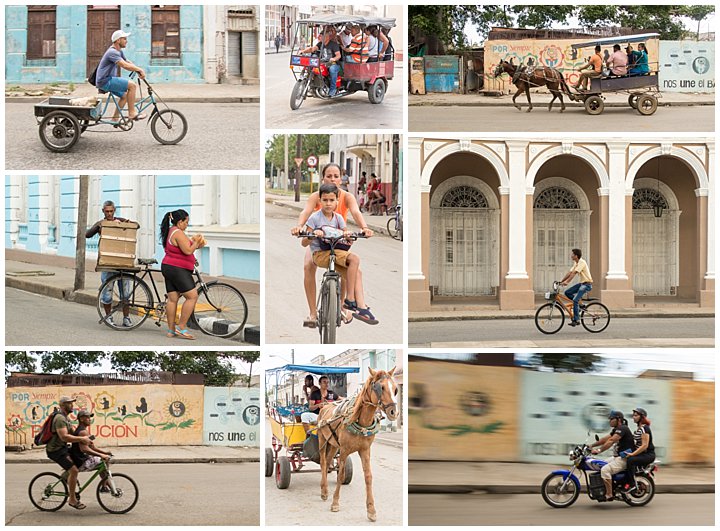
Much of our time in Cienfuegos was spent wandering around town, taking in the sights of the people in their everyday life and seeing the colonial-era buildings. I found it interesting to observe the modes of transportation they used. Gasoline vehicles were rather scarce (tuk-tuk taxi middle-top and motorcycle lower-right). Horses outnumbered gas powered vehicles (upper-right and middle-bottom), while foot pedal powered vehicles were the most common.
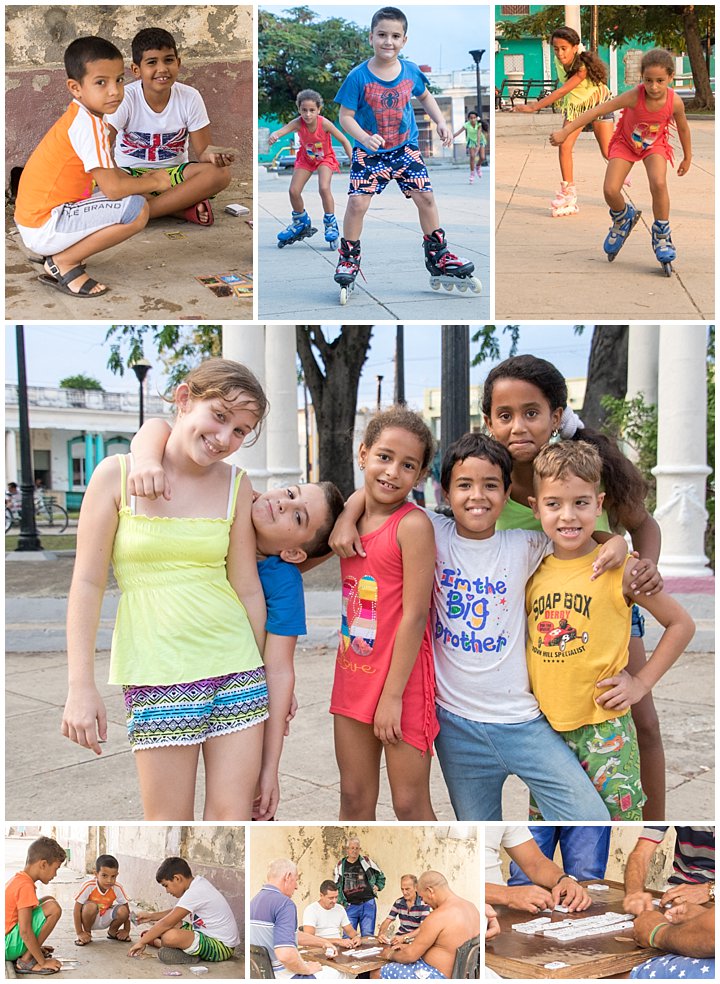
There were kids playing in the central square known as Parque José Marti, where half a dozen shared two pairs of in-line skates, taking turns racing around the plaza. On the side streets, there were kids playing card games (upper and lower-left), and we also found one group of four men playing dominoes (lower-middle and lower-right).
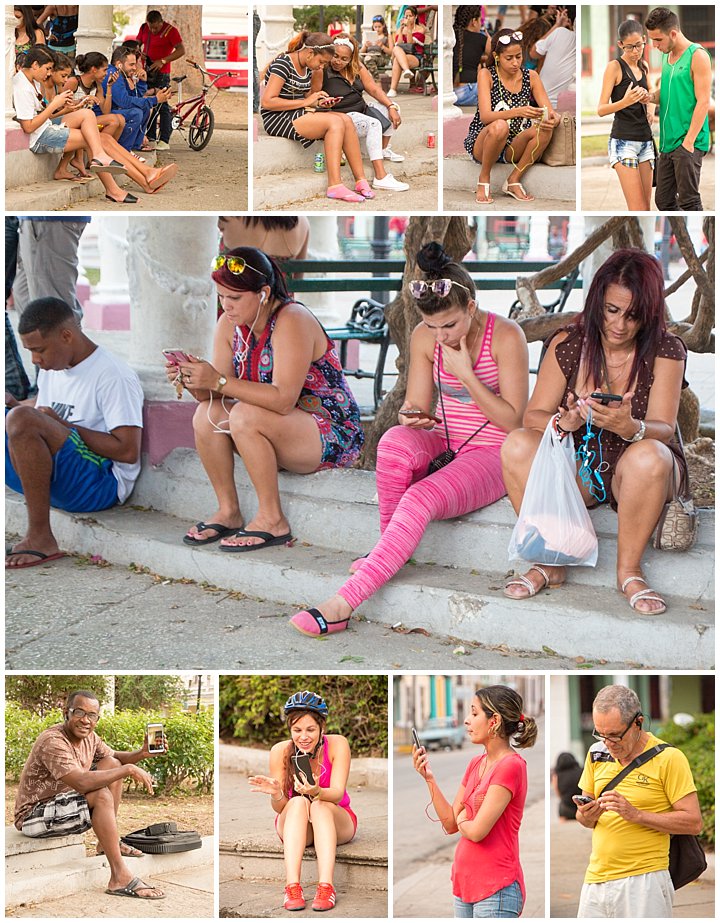
This was our second exposure to a central plaza absolutely jammed with young people, all staring at their smart phones. Yep, this was the only internet wifi hotspot in town, and it seemed every young adult was here using it at once. (See the Havana 2 post about details of allowable internet use in Cuba.)
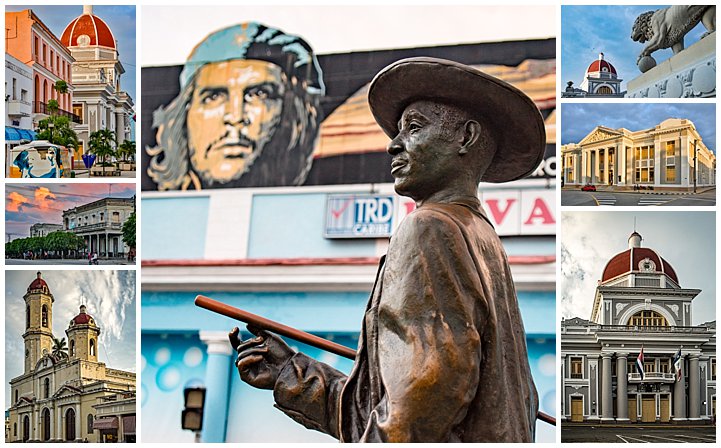
There were several Spanish colonial-era buildings that were of historical interest. Wikipedia noted that in 2005, UNESCO inscribed the Urban Historic Centre of Cienfuegos on the World Heritage List, citing Cienfuegos as the best example of early 19th century Spanish Enlightenment implementation in urban planning. This is a fancy way of saying that the city is pedestrian friendly, showcasing a promenade with retail on both sides, Paseo del Prado, leading to the main square Plaza de Armas (aka Parque Martí). The statue is Benny Moré, a Cuban musical virtuoso. The weather helped by presenting an interesting background for photographing the elegant architecture as the day came to a close. We were also treated to a horse-drawn cart tour of the city at sunset, so our days have been packed.
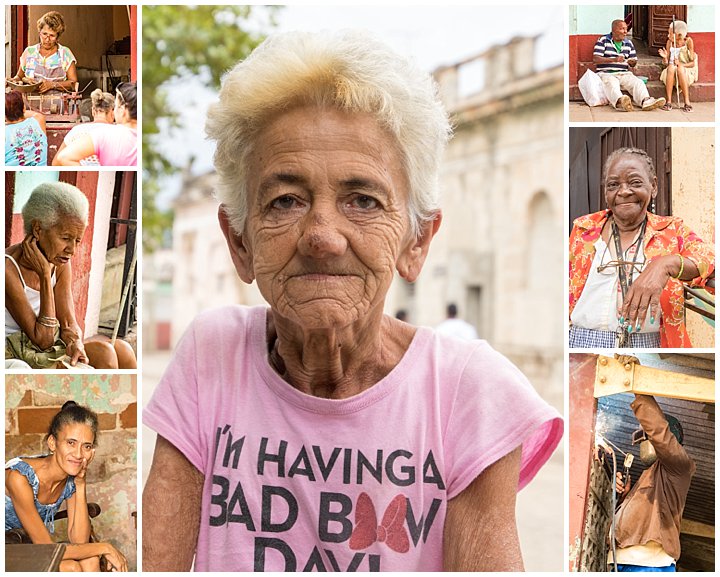
Cienfuegos was about the daily life of people though. Far more friendly and willing to have us take their photographs than the people in Havana had been. Everywhere we turned was another person who captured our attention… and of course, our cameras. Our guide had told us in advance that people in the rural areas were more welcoming and authentic than those in large cities, and this was proving true.
I never did quite figure out what the old woman’s shirt in the center meant though. Can you? “I’m having a bad bow day!” doesn’t quite make sense. I think I’m missing something, but there was no missing her! ☺
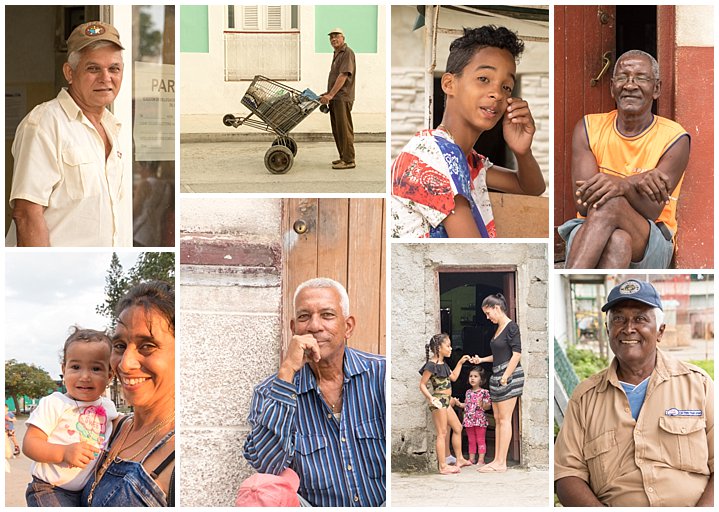
It was fun watching people in their daily lives, interacting with the owner of the print shop (top-left), the boy sitting on the back of a horse-drawn cart (top-third), the musician sitting in the doorway (bottom-second), and the ferry boat captain waiting for his boat to fill (bottom-right).

Within six blocks of the central park is an active port, both domestically and internationally. Cienfuegos was known as the Pearl of the South, and was once a very wealthy seaport connecting trade between Jamaica and South America. It is still a stop for cruise ships, who want to showcase how the real Cubans live.
